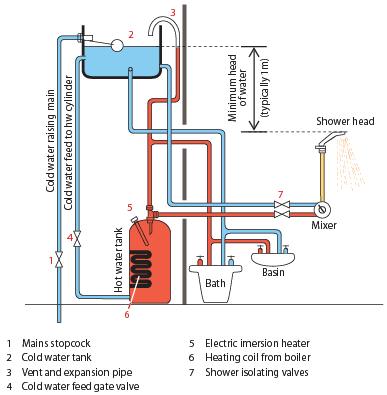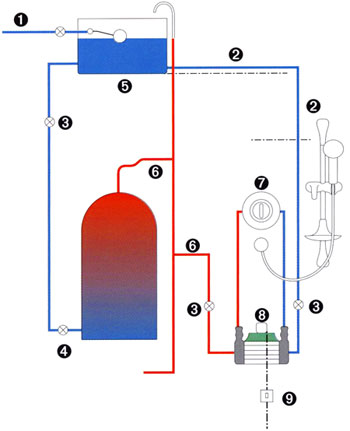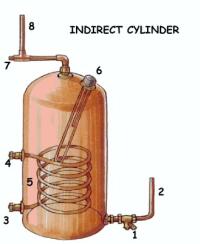|
Thread Number: 21774
Question for the Europeans about new washers with both hot and cold water intakes |
[Down to Last] |

|
| Post# 342528 , Reply# 1 4/15/2009 at 16:36 (5,479 days old) by passatdoc (Orange County, California) | ||
|
ps Even when an internal heater is used here in USA, it only has to boost the incoming hot water to the somewhat higher temperature specified by the manufacturer for the "Sanitary" cycle. Since it's only working on 120V, it's a good thing it doesn't have to heat from the cold water line, or else it would take hours to run a single load of laundry! | ||
Post# 342557 , Reply# 6 4/15/2009 at 18:11 (5,479 days old) by logixx  (Germany) (Germany) |
||
 | ||
Post# 342735 , Reply# 11 4/16/2009 at 14:16 (5,478 days old) by launderess  (Quiet Please, There´s a Lady on Stage) (Quiet Please, There´s a Lady on Stage) |
||

It is very difficult to compare, as washing habits on either side of the pond vary. This comes from both traditional wash day methods and preferences and factoring in economics and lifestyle. The United States is rather a young country, with abundant natural resources,and or a populace by and large not adverse to importing petrol to meet it's needs. By and large most heating and hot water is done in the United States either with oil or natural gas, both of which are cheaper in many areas than electric power. Miele tried until they were blue in the fact to convince large amounts of American housewives and others that using a 220v washer to heat cold or cool water to warm or hot was the way to go. In response consumers shot back they have a huge boiler or hot water heater for that purpose, and didn't see any benefit,and the effect might be a larger electric bill. Miele also tried (and gave up on), making US consumers understand high wash temperatures combined with oxygen bleach gave stunning whites. This "boil wash" of Europe also didn't sit with Americans who by and large are wedded to using vast amounts of LCB for whitening, stain removal and disenfecting their laundry. Even Consumers Reports states that the savings from allowing the washing machine to heat water verus drawing it from the tap is going to vary based upon several factors. In Europe and the UK, things are obviously different. Housing stock in older by and large, sometimes much older, (we are talking centuries here), and often it is not possible nor wished to retro fit homes or apartment buildings with central hot water. Hence all those hot water heaters over sinks or tucked in a closet or cubby off the kitchen or bath. Indeed one of the few bright spots (if one could call it that), of WWII was so much was bombed out,that new buildings went up with more mod cons. It is still fairly common to rent or purchase a flat or apartment and get just that; one has to fit out everything including kitchen and bath fixtures, and perhaps some plumbing. Given the various methods for heating hot water in Europe/UK and often quite high energy costs, it does make sense to let the washng machine heat water. Even more because 220v power is the norm, and sometimes one can even get 400v. One supposes the push towards cold fill only machines in Europe has to do with "energy" savings, based upon a rather general formula. However considering how long cycle times are already on many modern EU front loaders, adding more time to heat water drags things on for hours. Of course EU regulators may be betting on the recent trent towards warm and cold water washing, which does not require the Uber-high wash temps of old. Boil washing is dying a slow but steady death all across the EU and UK. Heating cold or even very cold water to 85F or 100F is a snap when using 220v power. | ||
| Post# 342794 , Reply# 16 4/16/2009 at 16:18 (5,478 days old) by askomiele (Belgium Ghent) | ||
|
Jup laundry is washed and rinsed in rainwater and if you keep your "well" clean there is nothin "yuk" about it. We have flow through heaters but not every house has the ability of using gas + still don't get the second heater thing... it's just not efficient | ||
| Post# 342799 , Reply# 19 4/16/2009 at 16:59 (5,478 days old) by toggleswitch2 () | ||
|
I never understood the aversion to simply replacing the storage tank with a modern one and including a temperature-pressure relief value. This way water-storing cisterns are avoided and regular mains pressure can be what is used to move the heated water. | ||
| Post# 342803 , Reply# 20 4/16/2009 at 17:03 (5,478 days old) by mrx () | ||
|
Pumped shower (Ireland) Here's a typical 'power shower' setup. 
| ||
| Post# 342805 , Reply# 21 4/16/2009 at 17:06 (5,478 days old) by mrx () | ||
|
With the pump ! The above is the standard system. With a pump added it looks like this : 
| ||
| Post# 342954 , Reply# 22 4/17/2009 at 03:23 (5,478 days old) by mielabor () | ||
|
What are the advantages of a gravity fed hot water system? It looks rather complicated to me. Here in the Netherlands I have never seen such an installation. | ||
| Post# 343118 , Reply# 27 4/17/2009 at 18:22 (5,477 days old) by mrx () | ||
|
That's the typical hot water cylinder here Here's the layout of a typical hotwater cylinder here. 
| ||
| Post# 343187 , Reply# 30 4/17/2009 at 21:49 (5,477 days old) by toggleswitch2 () | ||
|
More about wooden water-storing cisterns. CLICK HERE TO GO TO toggleswitch2's LINK | ||

 Comes to the Rescue!
Comes to the Rescue!